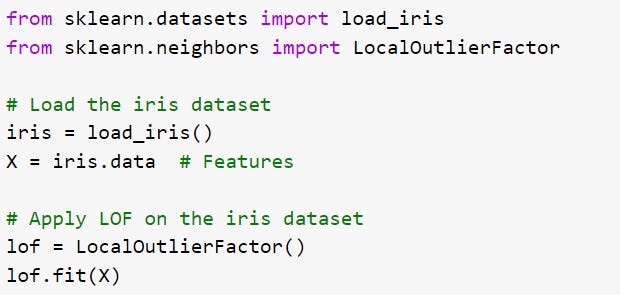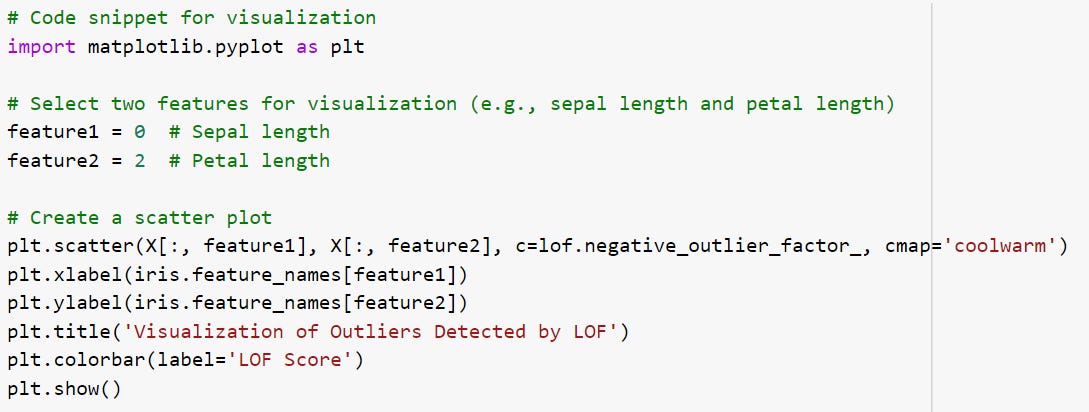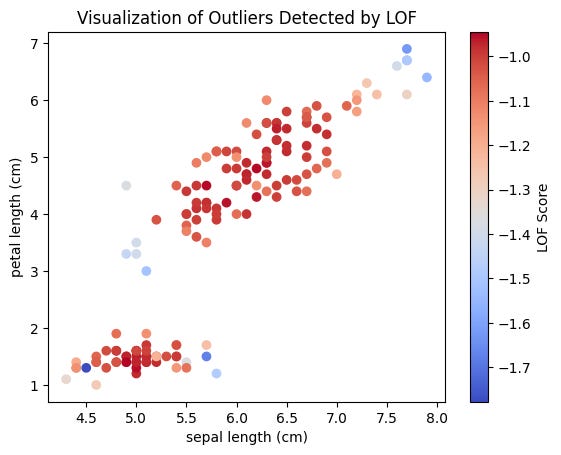Detecting Anomalies with Local Outlier Factor
Learn with Python
Outlier detection plays a crucial role in various domains, helping to identify data points that deviate significantly from the norm. On this front, the Local Outlier Factor (LOF) algorithm, a powerful tool for local outlier detection, assigns an anomaly score to each data point based on its deviation from its neighbors through quantifying the local density of the data points. Higher local outlier factor scores indicate a higher likelihood of being an outlier, and the converse for lower scores.
To illustrate, we will use the well-known dataset in machine learning, the iris dataset. This dataset contains measurements of iris flowers, including sepal length, sepal width, petal length, and petal width.
By applying Local Outlier Factor, we can effectively detect potential anomalies among the iris flowers and gain insights into any unusual observations.
Below is the code to use the scikit-learn library in Python to analyze the dataset. Since Local Outlier Factor is an unsupervised algorithm, we won’t be using the flower species labels during analysis.
To visualize the results of Local Outlier Factor, we can create a scatter plot to highlight the anomaly scores of the data points. Using two relevant columns (sepal length and petal length) on the X and Y axes, we can color-code that data points based on their Local Outlier Factor scores, which will allow us to identify potential outliers in the dataset.
Outliers with high local outlier factor scores color coded in blue represent iris flowers that significantly deviate from the characteristics of their local neighborhood. These data points might indicate rare or unusual instances that require further investigation or analysis.
CodeChat
Today’s CodeChat was a success! I was able to bring a panel of people together including Andrew Marchment who works in satellite repair, Dana Harlos who works in digital transformation consulting, Starla Cameron from UCLA, and Liqun Yang from the Louisiana Department of Health on one meeting to talk about what they see in the field of machine learning and AI, which certainly added more perspective to the conversation. I intend to keep this running at least monthly, so if you have any ideas that you would like covered on the next chat, please leave me a message on the SubStacker’s Message Board.
If you have any general thoughts or suggestions, please let me know as well!



